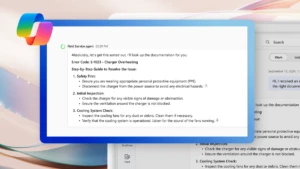
Accelerate time to insight with Azure Synapse Link for Dataverse
In conversations with the community, many have asked for a single, end-to-end way to work with data in Microsoft Dataverse, from running AI and machine learning, integrating with external datasets, and slicing and dicing large volumes of Dataverse data. Now, instead of using multiple tools to get the job done, you can accelerate time-to-insight with a single comprehensive solution that can help you deliver on these goals end-to-end; something that is built-in and available out-of-the-box.

Microsoft Dataverse
You can use the Azure Synapse Link to connect your Dataverse data to Azure Synapse Analytics.
Today, we are announcing Azure Synapse Link for Dataverse, which enables Dataverse integration with Azure Synapse Analytics. With a few clicks, you can bring your Dataverse data to Azure Synapse, visualize data in your Azure Synapse workspace, and rapidly start processing the data to discover insights using advanced analytics capabilities for serverless data lake exploration, code-free data integration, data flows for extract, transform, load (ETL) pipelines, and optimized Apache Spark for big data analytics.

Seamless integration of Dataverse with Azure Synapse empowers our customers to analyze data in the lake. Enterprise customers are now able to use the familiarity of T-SQL to analyze big data and gain insights from it, while optimizing their data transformation pipeline to leverage the deep integration of Azure Synapse with other Azure services such as Power BI Embedded, Azure CosmosDB, Azure Machine Learning, and Azure Cognitive Services.
Key features of Azure Synapse Link for Dataverse
- Simple and intuitive interface to land your Dataverse data in your Azure Synapse workspace with a few clicks.
- Support for initial and incremental writes for copy, update, delete (CUD) for data and metadata.
- Visualize Dataverse data in Azure Synapse workspace in a single click.
- Continuous export of data and metadata without any manual intervention.
- Continuous snapshot updates for large analytics scenarios.
How to land Dataverse data in Azure Synapse
With three clicks, you will be able to link your Dataverse environment to Azure Synapse, continuously push Dataverse table data, and visualize that data in Azure Synapse and rapidly start processing the data.
Link your Dataverse environment to Azure Synapse
On the Azure Synapse Link tab (formerly known as Export to Data Lake) in the Power Apps maker portal, start the New link to data lake wizard and select Connect to Azure Synapse workspace. If you don’t already have one, please create an Azure Synapse Analytics workspace, before proceeding to next steps. Select your Azure subscription and resource group and we will automatically pull your Azure Synapse workspace and the storage account associated with it.
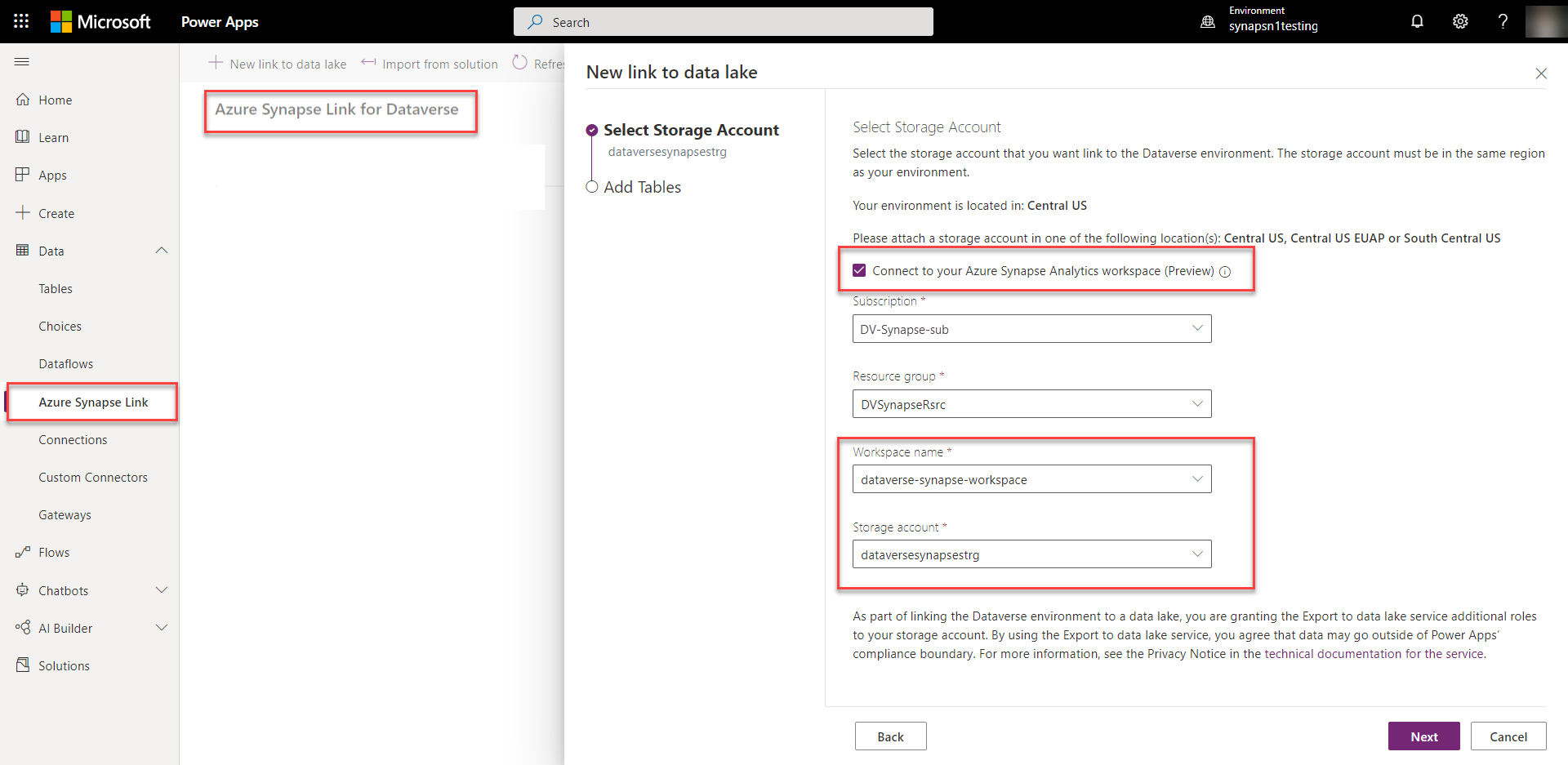
Select Dataverse tables that you want to analyze
Select the Dataverse table(s) with the data you want to push to Azure Synapse.
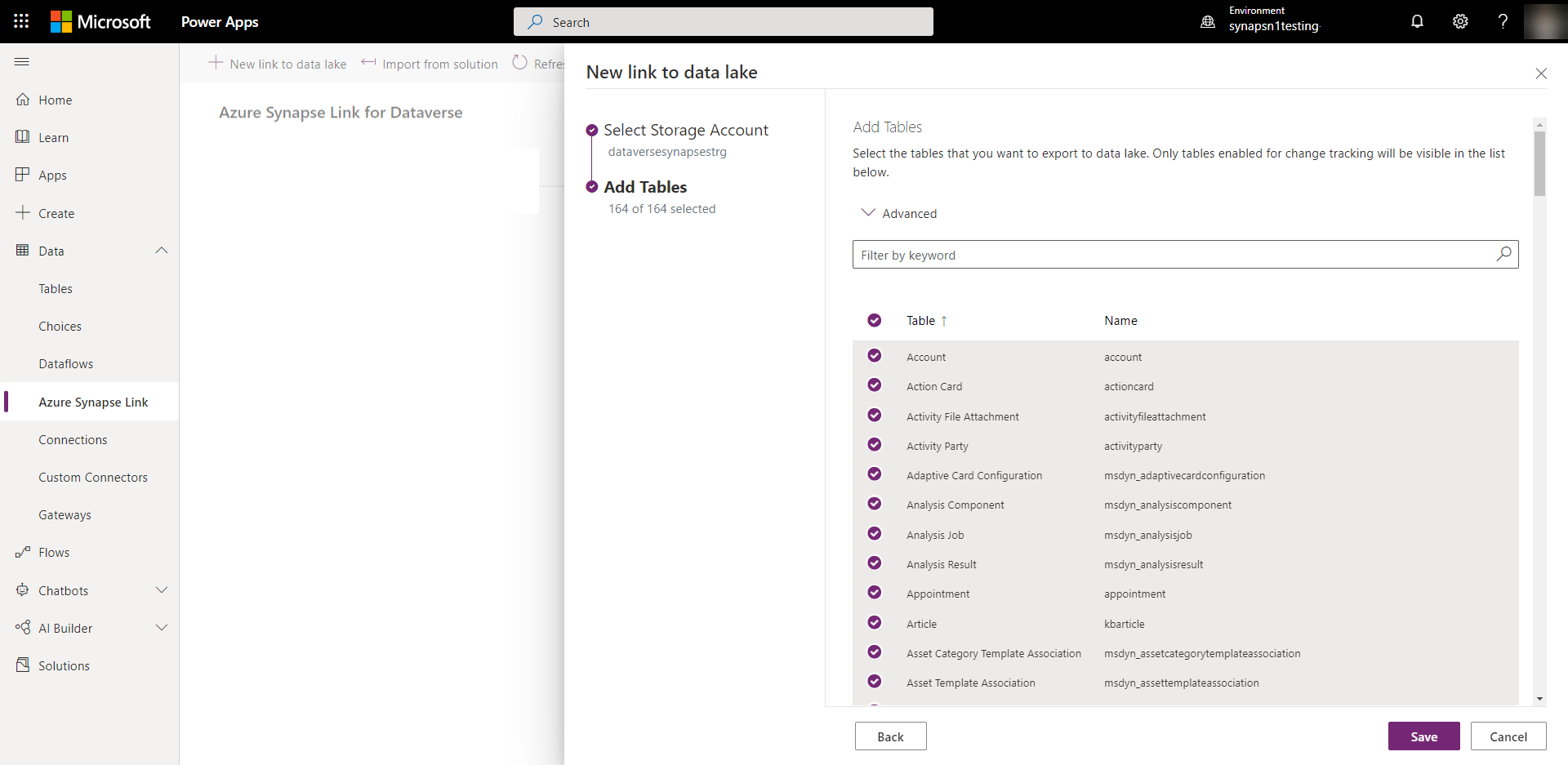
Visualize your Dataverse data in Azure Synapse with a single click
Once you have exported your data, with a single click, you can launch your Azure Synapse workspace and view your Dataverse data. You no longer have to leave the Power Apps maker portal and go to the Azure Synapse portal and log in all over again. We do it for you by providing a shortcut that launches you directly to your Azure Synapse workspace where you can see the Dataverse data that you just exported and start running your queries and rapidly discover insights.
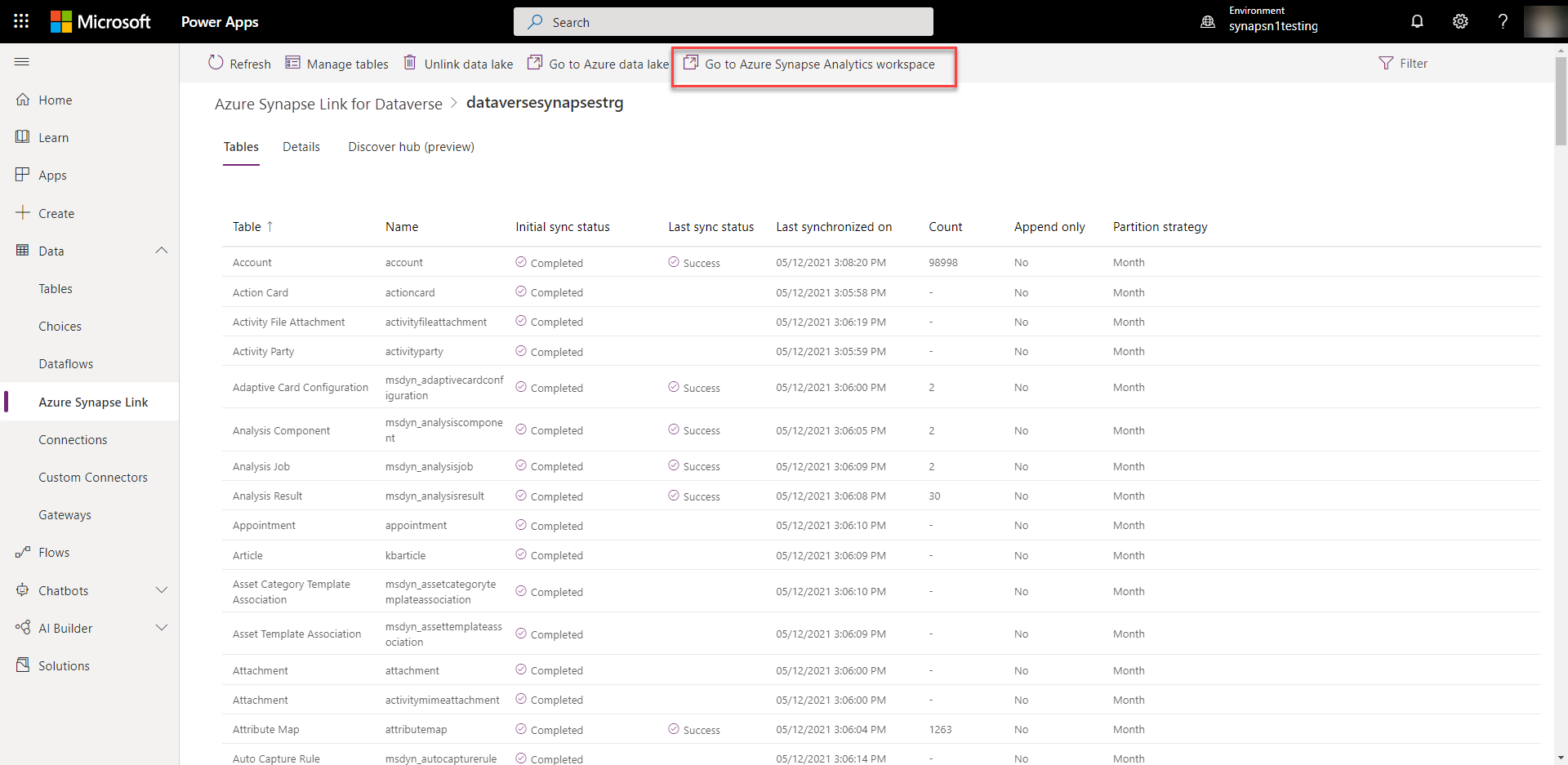
Analyze your Dataverse data using Azure Synapse
As soon as you launch your Azure Synapse workspace, you can start processing your Dataverse data with Azure Synapse to perform analytics jobs such as:
- Serverless data lake exploration: Use familiar T-SQL for ad-hoc analysis and quick insights that aren’t tied to a specific workload all without importing data.
- Data integration: Build scalable ETL pipelines to ingest, integrate, and transform data.
- Big data processing and analytics: Use the optimized Apache Spark in Azure Synapse for data preparation, data engineering, and machine learning.
Here is an example of deriving the top 100 accounts from the Dataverse account table that we just pushed to Azure Synapse using T-SQL for serverless data lake exploration. Running this type of ad-hoc analysis is quick and simple as it requires no provisioning of clusters or managing resources—all you need is a Synapse workspace.
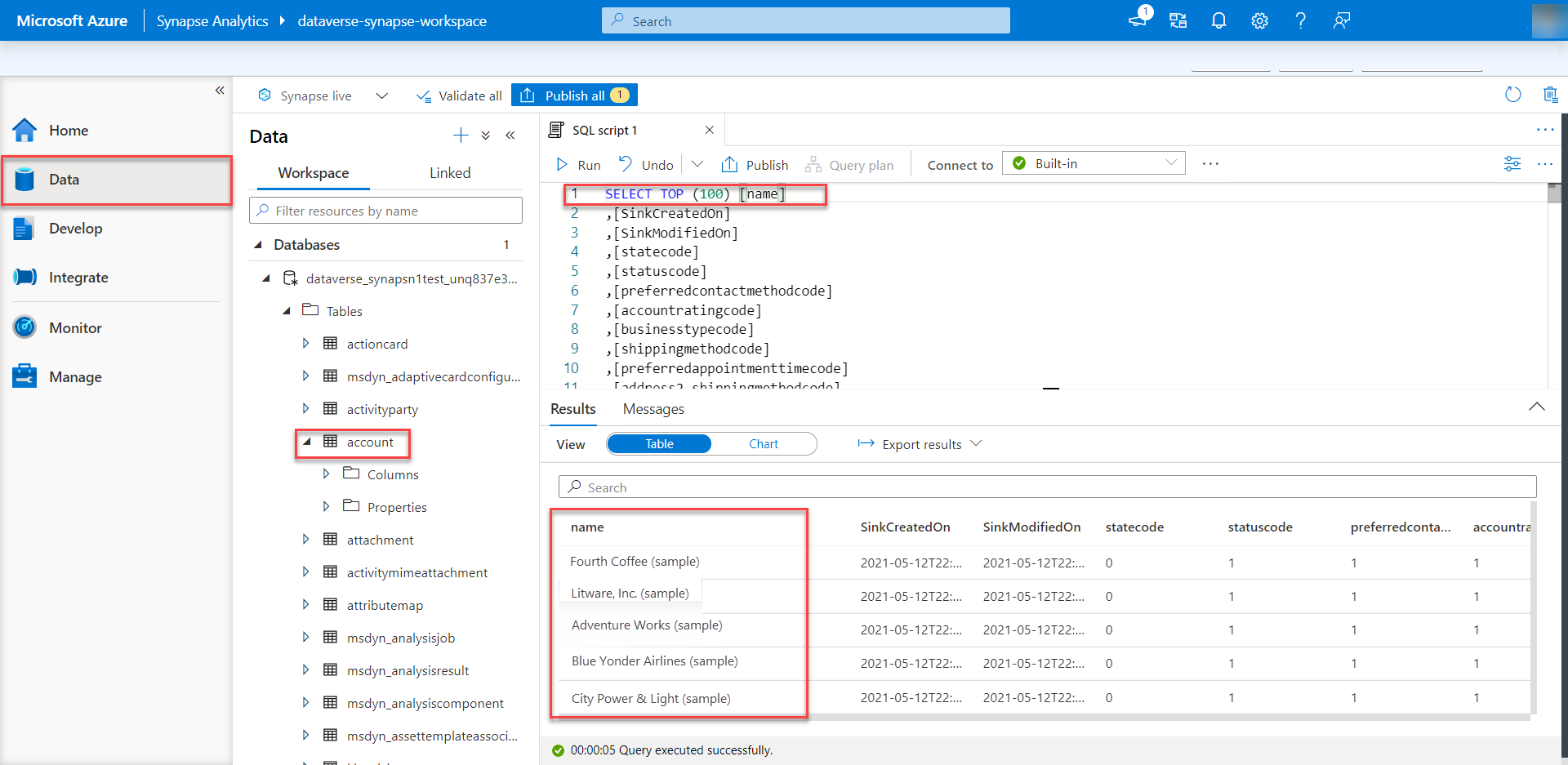
And it doesn’t stop here—you could easily feed this data to Power BI.
Build reports over your Dataverse data using Power BI
Feed your Dataverse data to Power BI using Direct Query or Import mode via Azure Synapse Analytics connector in Get Data in Power BI. For server information, use the Serverless SQL endpoint and start reporting on your Dataverse data using Power BI.
Grab the Serverless SQL endpoint by going to Azure portal and navigating to your Azure Synapse Analytics workspace.
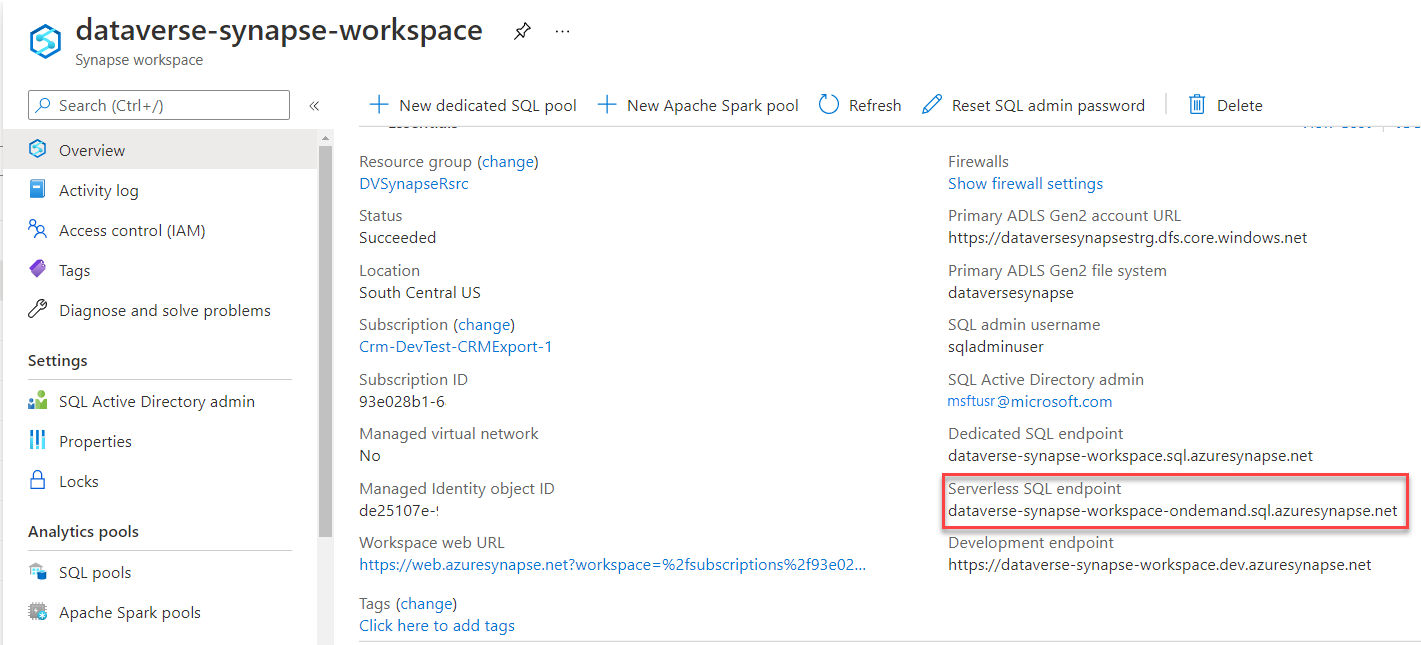
In Power BI: Get Data, select the Azure Synapse Analytics connector and hit Connect.
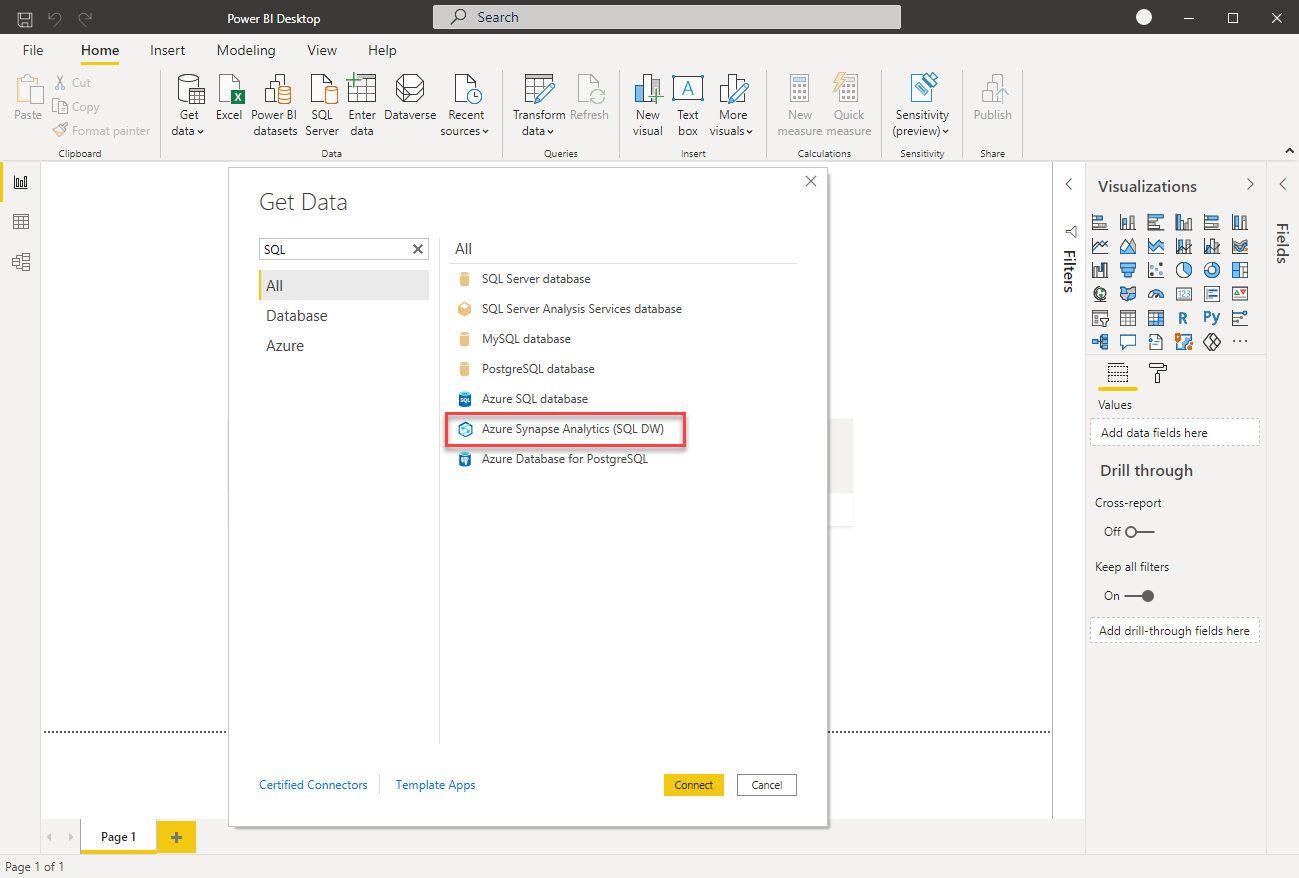
Copy and paste the Serverless SQL endpoint with DirectQuery.
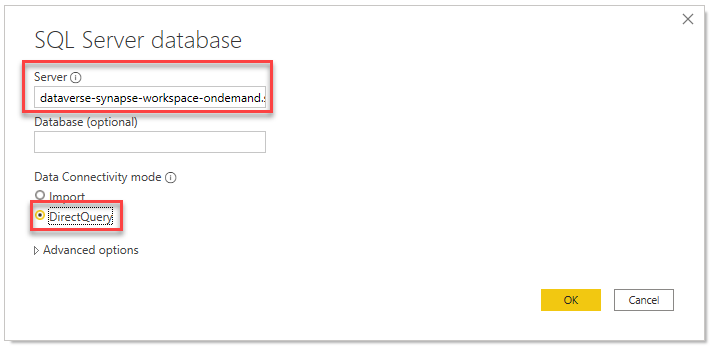
Start reporting on your Dataverse data using Power BI.
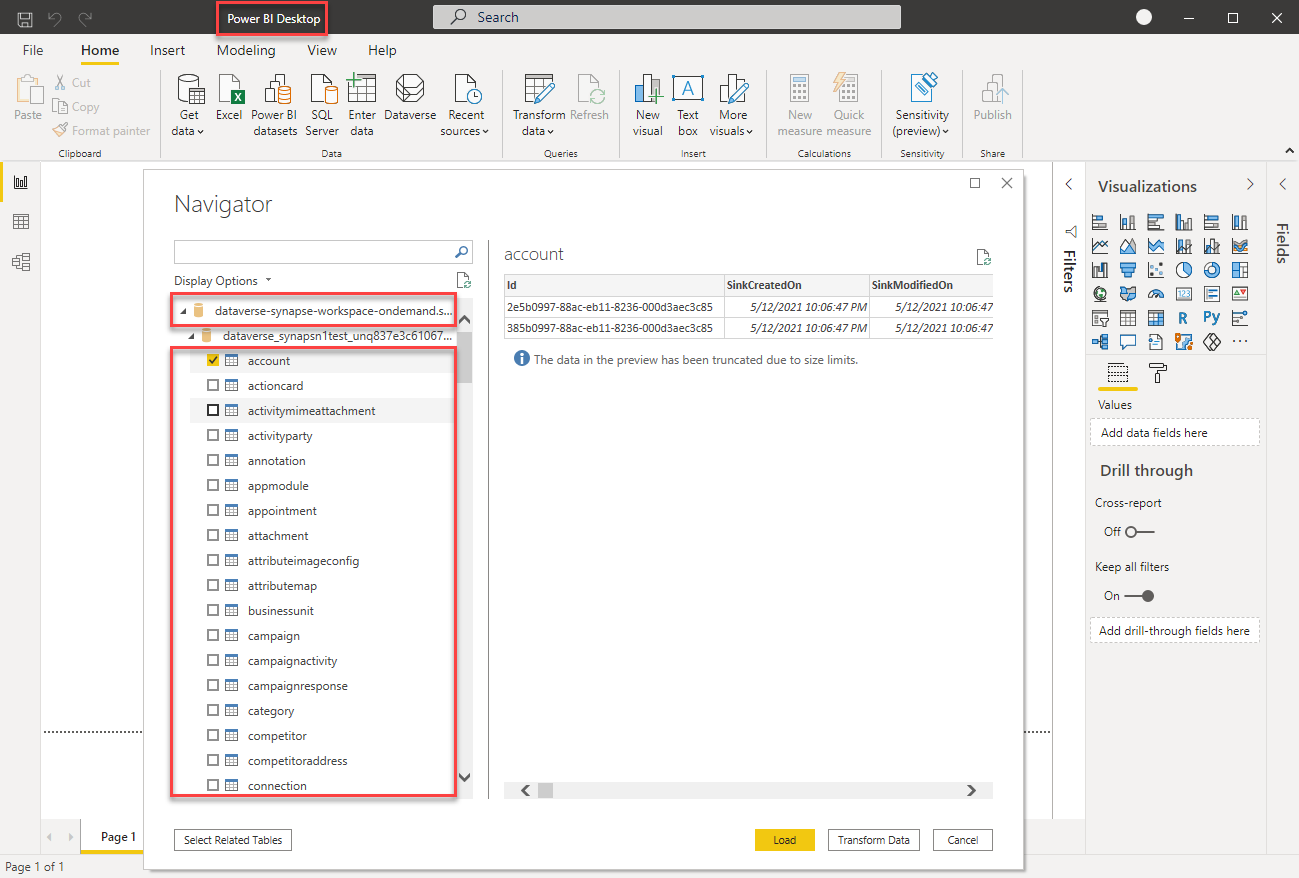
Similarly, you can use Apache Spark runtimes out-of-the-box and merge with external data to generate insights.
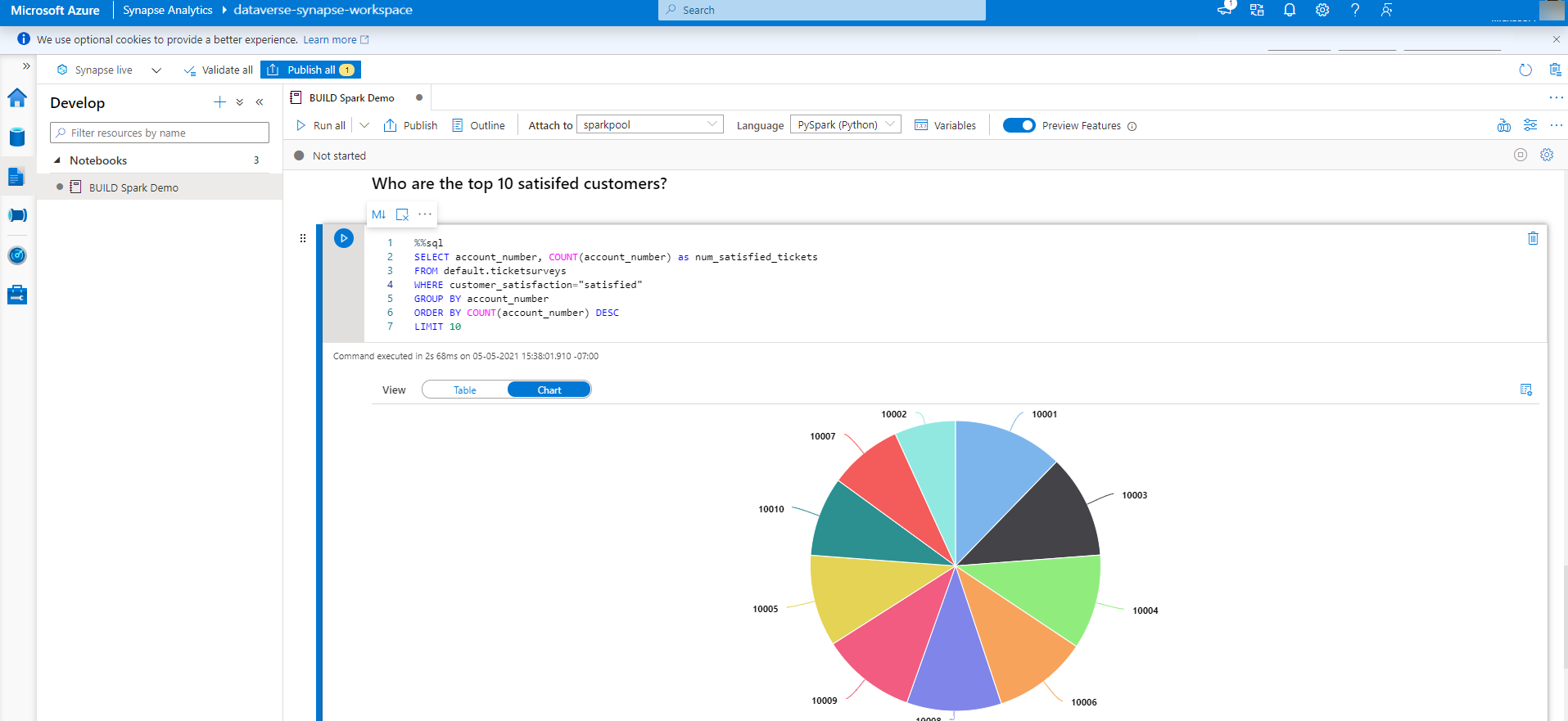
How to access the Azure Synapse Link for Dataverse preview
To access, go to Azure Synapse Link for Dataverse preview and follow the step-by-step Azure Synapse Link guide.
Learn more about Microsoft Dataverse.
As always, thank you for being our customer and we appreciate your time in testing this feature and providing us feedback here at SynapseLinkforDataverse@service.microsoft.com.




